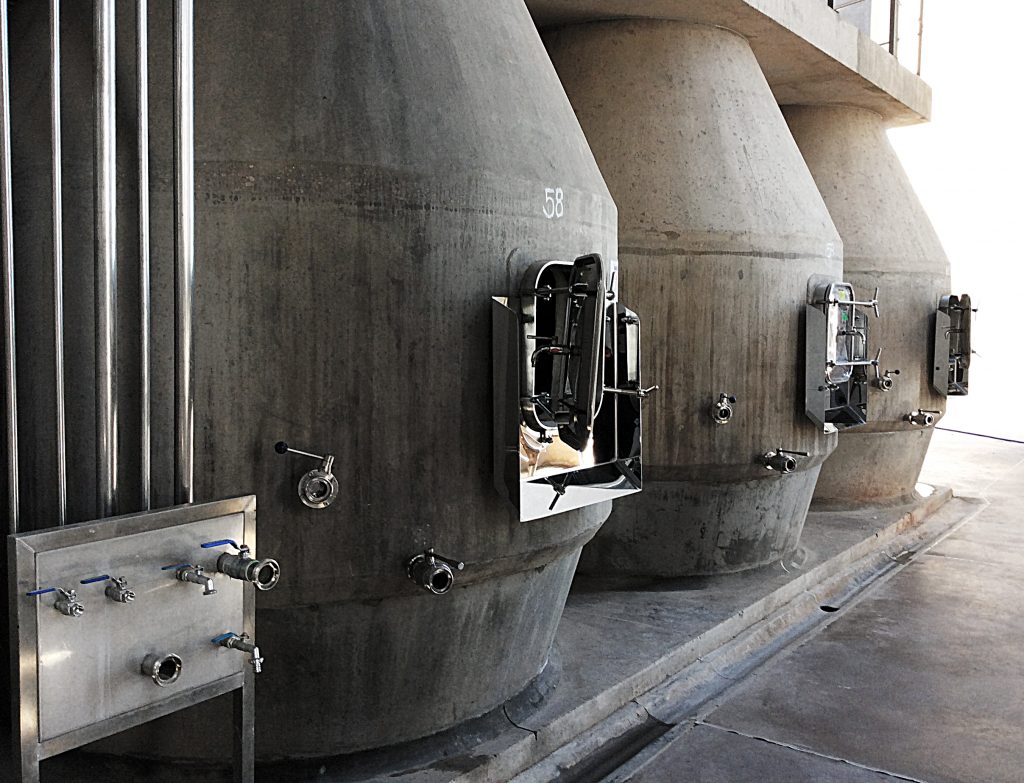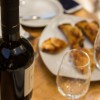The era of reinforced concrete eggs has arrived
When the Italian winemaker and consultant Alberto Antonini announced a shift towards terroir at Alto Las Hormigas, back in 2011, he spoke in addition about clay and calcium carbonates, to move forward, looking at the past. The press, listening to his new preaching, felt a certain unease: if until yesterday, wineries were speaking of the modernisation that has traversed the Argentine wine business, how could someone with as much clout as Antonini be looking back at the past to pay for the future? With the curious logic of premonitions, time proved him right. And his remarks, which were then just the tip of the iceberg, quickly checked out in the years that followed and in concrete facts. Like something out of a science fiction movie, local wineries began sprouting a series of Cocoons – concrete eggs – which represented not only a new system of winemaking, but a new way of interpreting wine. However, the other vessels and concrete tanks, were not forgotten, and took their place again among the chosen high-end wines. To put it in Hollywood terms: Argentine wine began a trip of “back to the future”.
The true mineral
In the search for a more natural treatment of wine, local wineries today opt for a handful of old technologies, which have recently gained popularity. Among them, reinforced concrete – whether in the form of vats or eggs – has once again taken centre stage.
Alejandro Vigil, chief winemaker at Catena Zapata, one of the main exporting wineries of Argentina, in República Chachingo – his personal project – started with some concrete eggs and has now built concrete tanks of the same material in the rocky soil of Maipú. “The floor is concrete and has a logical connection to the wine -says the winemaker. They don’t have to be coated in epoxy paint, but you have to cure them with tartaric acid, which is also present in wine, to render them harmless”, he says. It sounds logical, although stainless steel also comes from the earth, with some differences. Horacio Bibiloni, winemaker at Bodega Humberto Canale, Patagonia, knows firsthand: “The concrete that was used to build the older tanks, is key in cold areas like ours. If it were not for its natural thermal inertia, that doesn’t cool as fast as with the stainless steel, the wine would have some complications to complete alcoholic fermentation and malolactic fermentation because the cold in this region of Argentina arrives earlier”.
But the ability to buffer the changes in temperature is not the only virtue of these tanks. Another advantage is that they do not generate static electricity like stainless steel. But this detail, which seems like a very minor thing from the point of view of the consumer, creates problems in the winery. Essentially, this electricity generates turbidity to interact with protein substances, keeping them suspended, substances which must then be precipitated with adjuvants. “The wines fermented in concrete – says Vigil – have cleaner fermentations and less interference.”
It’s all about content
Marshall McLuhan, the Canadian philosopher of communication theory, revolutionised the way in which the mass media thought in the 1960’s, when he changed his approach and pointed to technology as the carrier of global change. “The medium is the message,” he said and galvanised his thinking in five words. The same could be said about wine.
While epoxy vats and large stainless steel tanks, which dominated Argentine wine – and the world – between 1990 and 2000, produced industrial wines with a good quality/price ratio, the pursuit of excellence and detail calls for a change in vessel. Now the idea is moving towards jars, small containers and eggs. Following McLuhan, the container is the message.
Eggs. One way in which Mother Nature wisely developed over millions of years of evolution, was its ability to generate a homogeneous environment in which life develops. “Within the cortex -exemplifies winemaker Matías Michelini, one of the precursors of its use in Argentina – natural movements of fluid follow the laws of thermodynamics, and the wine tends to homogenise the temperature throughout the volume and natural form” he says. Something our elders sensed with their earthen jars which, combined with the inertia of contemporary concrete, form a tandem that is revolutionising development.
Add to this; dimension: it is unfeasible to work with large volumes of wine in ovoid forms because their thermal benefits are lost. So the vineyard parcels need to be in small sections for harvest. And so the vision returns to the land, to the knowledge of the detail of the vineyard and its peculiarities.
Something that, when Antonini turned the rudder of his winery and announced its change of course, seemed like an act of folly that, at the end of the day turned out to be an important cog in the wheel on which the industry is moving. Thus, the time machine is in full swing in Argentine wine.
Now, back to the future.
Foto: gentileza Joaquín Hidalgo- Lugar: Bodega Zuccardi Altamira




Pingback: RT @hidalgovinos: My notes on wine since now also… | Restorantes
troncoconic vats from Zuccardi Winery in Altamira????